Distribution Shifts / Wildlife Docs / Trilogy Films’ Dawn Porter
The Secret Lives of Mormon Wives ’ Danielle Pistotnik




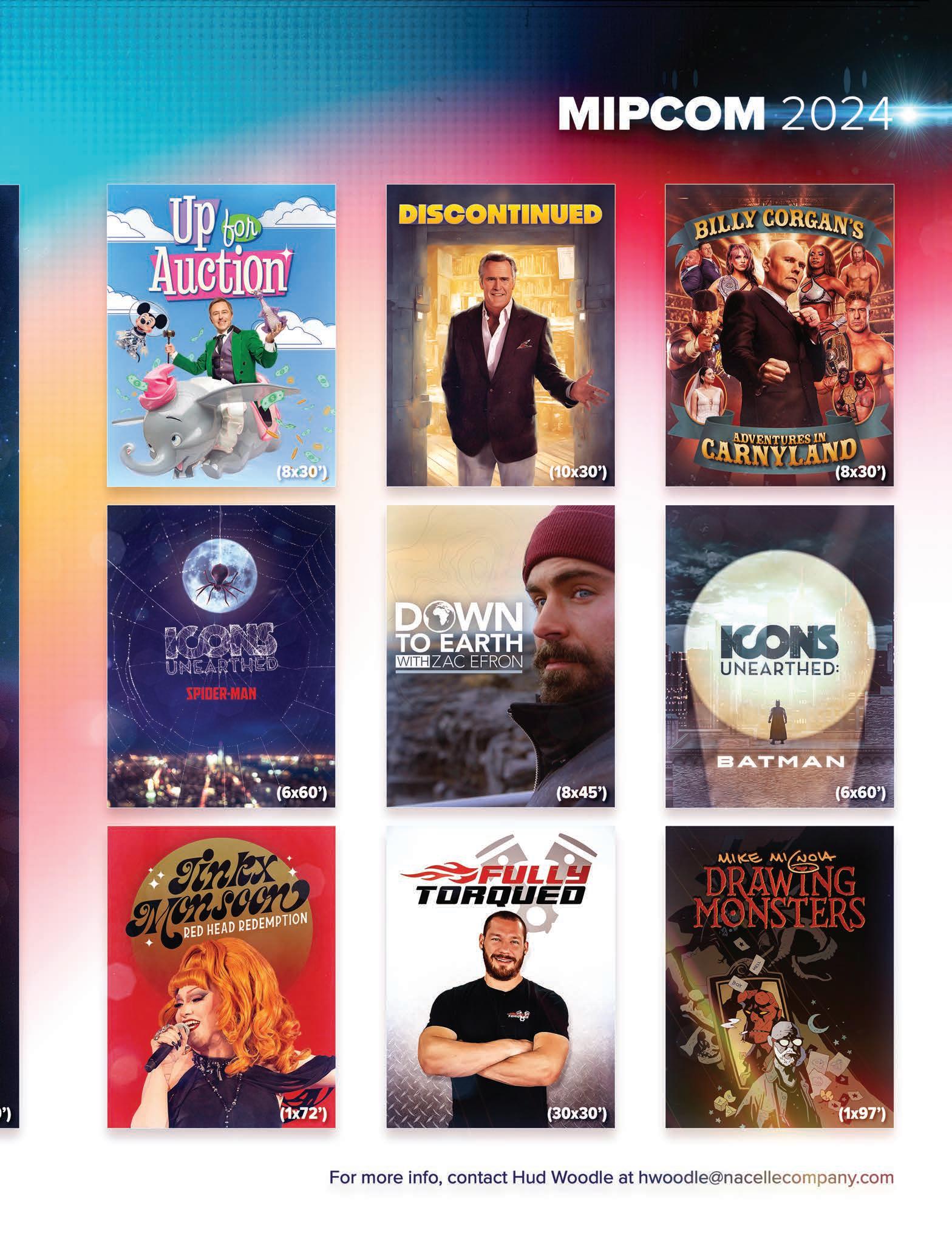








I remember watching Robert Durst’s bathroom hot-mic confession as it played out on HBO in The Jinx; it was one of those eye-popping, text-your-friends-about moments that still happened in 2015, even as the streaming revolution was in full swing.
Leading factual distribution executives weigh in on funding challenges and opportunities, FAST potential and curating compelling slates for buyers.
Ricardo Seguin Guise
Publisher
Mansha Daswani
Editor-in-Chief
Anna Carugati
Editor-at-Large
Kristin Brzoznowski
Executive Editor
Jamie Stalcup
Senior Associate Editor
Alexa Alfano
Associate Editor
David Diehl
Production & Design Director
Simon Weaver
Online Director
Dana Mattison
Sales & Marketing Director
Genovick Acevedo
Sales & Marketing Manager
Ute Schwemmer Bookkeeper
The best documentaries do still deliver their fair share of what-just-happened? scenes. (There were several in HBO’s recent Chimp Crazy, but I resisted the urge to text my friends—there is nothing worse than a spoiler.) But I’m a little unenthused about the overall state of true-crime documentaries today. Like many, I love the genre. This surge in truecrime docs should be a content heyday for me, but in reality, I’m a little underwhelmed, especially by the ones that promise to be revelatory and end up leaving me with more questions than answers (the worst being, why’d I waste my time watching this?). Then there are the ones that ultimately leave you just feeling icky. You never want to be the casual observer of someone else’s suffering.
“Viewers like to binge on true crime, but they don’t want to feel like they’re indulging in the pain of a family or exploiting the victims in any way,” Poppy McAlister, the head of TVF International, said at our TV Real Festival this summer in a session on true-crime docs.
That panel also featured Kate Beal, the founder and CEO of Woodcut Media who also chairs the Association of True Crime Producers. “The whole point is to put the victim first,” she said. “You want to know that the memory, the family, the legacy of that victim are treated in the most respectful way.”

Environmental concerns, technological developments and the continued need for co-productions are reshaping the nature and wildlife filmmaking space.
Whether you’re searching for compelling history, stunning wildlife, buzzy reality or gripping true crime, you’ll find a standout selection in our latest edition of the TV Real Screenings Festival.
Ricardo Seguin Guise
President
Anna Carugati
Executive VP
Mansha Daswani
Associate Publisher
Kristin Brzoznowski
VP, Content Strategy
TV Real
©2024 WSN INC.
401 Park Avenue South, Suite 1041, New York, NY 10016, U.S.A.
Phone: (212) 924-7620
Website: www.tvreal.com
True crime leads the factual commissioning market and may be crowding out other genres, but those we spoke to across this edition are feeling upbeat about the sector at large. Our distributors’ survey explores funding innovation and FAST channel expansion. We spotlight the always-in-demand wildlife and nature segment. Dawn Porter talked to us about finding opportunities to explore the topics that move her, from the life of Luther Vandross to the history of the U.S. Supreme Court. Even in reality TV, where it was starting to feel like everything that could be done had been done, Hulu struck a chord with The Secret Lives of Mormon Wives. We talked to Danielle Pistotnik, who was part of the team at Select Management Group that took a TikTok social media influencer scandal and turned it into the streamer’s biggest unscripted reality show this year. Mansha Daswani
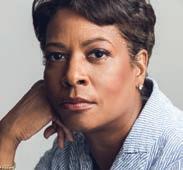

The Secret Lives of Mormon Wives’ Danielle

Norway—A Call from the Wild / Eco Crimes / Beaches of Europe
Albatross World Sales has among its offerings Norway—A Call from the Wild, in which filmmaker Asgeir Helgestad documents the state of nature in his home country. “Already an award winner, the title offers breathtaking cinematography and a personal narrative that highlights the universal theme of nature’s vulnerability,” says Anne Olzmann, managing director. The Eco Crimes three-part series delves into the world of environmental organized crime, while Beaches of Europe visits six different beaches and shows how they were formed by geological, meteorological and biological forces and also shape nature above and below the water. “Our goal is to highlight stories that entertain, educate and inspire, with a strong emphasis on environmental awareness, cultural exploration and human connections,” adds Olzmann.


“At MIPCOM, our mission is to showcase compelling, high-quality content that resonates with global audiences.”
—Anne Olzmann
Georgia O’Keeffe: The Brightness of Light / Coronation Girls / The Cure for Hate: Bearing Witness to Auschwitz
APT Worldwide’s Georgia O’Keeffe: The Brightness of Light, from Academy Award-winning director Paul Wagner, is “a fascinating exploration of the life and work of renowned artist Georgia O’Keeffe,” says Judy Barlow, VP of business development. The hour-long documentary Coronation Girls looks at a group of Canadian women who attended Queen Elizabeth II’s historic coronation in 1953. Some 70 years later, the ladies reunite and receive a surprise visit from King Charles III. The Cure for Hate: Bearing Witness to Auschwitz profiles Tony McAleer, a former skinhead and Holocaust denier who travels to Auschwitz on a personal journey of atonement, exploring the conditions that allow people to join extremist groups. APT Worldwide is also offering a collection of Rick Steves travel specials.
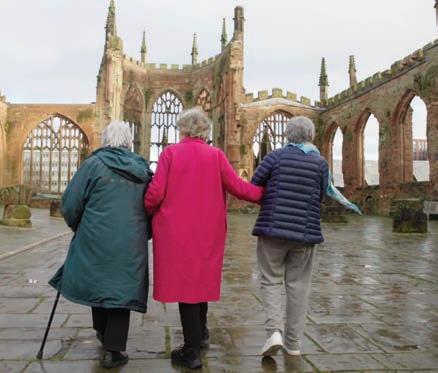
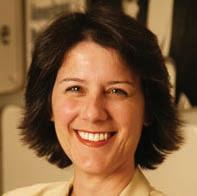
“We have new series and specials ready for broadcast, streaming, educational, inflight, footage licensing and other rights.”
—Judy Barlow
Dying Democracies—Europe in Decline / Katavi—Africa’s Last Refuge / Rum & Revolution—History of Havana
For MIPCOM, Autentic Distribution is highlighting Dying Democracies–Europe in Decline . The documentary uncovers how Hungary, Italy, the Netherlands and France are slipping into illiberal democracy, using democratic processes to dismantle freedoms. In the nature and wildlife title Katavi–Africa’s Last Refuge , an extreme weather event hits Katavi National Park in Tanzania, sparking conflict and alliances among hippos, crocodiles and lions as they struggle for survival. Rum & Revolution–History of Havana highlights the metropolis during the mid-20th century. The title “provides a captivating exploration of Havana, blending its rich history with a touch of celebrity allure,” says Mirjam Strasser, head of sales and acquisitions.

“We are a reliable source for documentaries that make a meaningful impact.”
—Mirjam Strasser
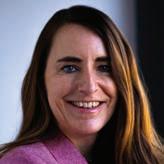

Seized at Sea / Tsunami: The Day the Wave Hit / Mysteries of…
Seized at Sea, on offer from BossaNova Media, follows the template established by Borderforce USA , which rolled out in May 2023 on Discovery Channel. The new 12-part Seized at Sea follows the work of the U.S. Customs and Border Protection as it battles to stop smugglers and traffickers from breaching the country’s borders. Tsunami: The Day the Wave Hit provides an “emotional and heroic look at the human stories of December 16, 2004,” explains Holly Cowdery, head of sales at BossaNova. Mysteries of… explores the secrets behind three phenomena: Stonehenge, the Loch Ness Monster and giant sinkholes. Seized at Sea, Tsunami: The Day the Wave Hit and Mysteries of… have “unique storylines, strong characters and fresh perspectives,” says Cowdery.
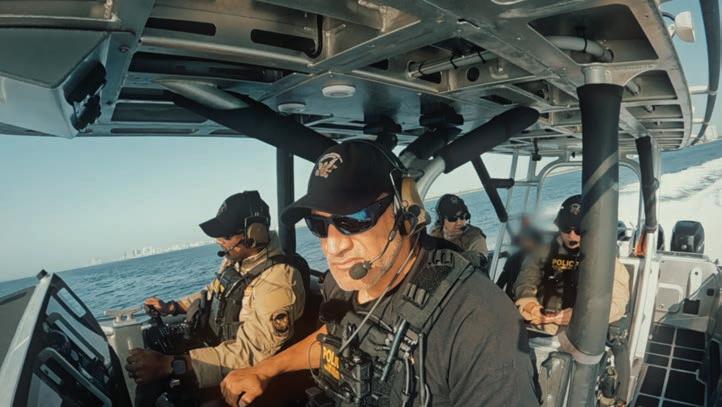

Icons Unearthed: Tom Cruise / Game Changers / The Toys That Made Us
Nacelle Company is highlighting season ten of the Vice TV series Icons Unearthed , focusing on actor Tom Cruise. Icons Unearthed: Tom Cruise delves into the highs and lows of the star’s career through the eyes of the people who have worked beside him. The first season of Game Changers also tops the company’s MIPCOM roster. Airing on Max in the U.S., the title explores the history of popular games and their influence on today’s society. Seasons four and five of The Toys That Made Us continue to take viewers behind the scenes of the culture-impacting toys from their childhoods. “The most consistent comments we’ve received over the last five years have been some sort of inquiry about the future of The Toys That Made Us,” says Brian Volk-Weiss, CEO of Nacelle.
“Our goal at MIPCOM is to further expand our client base, diversify within the VOD space and sell as many hours as possible.”
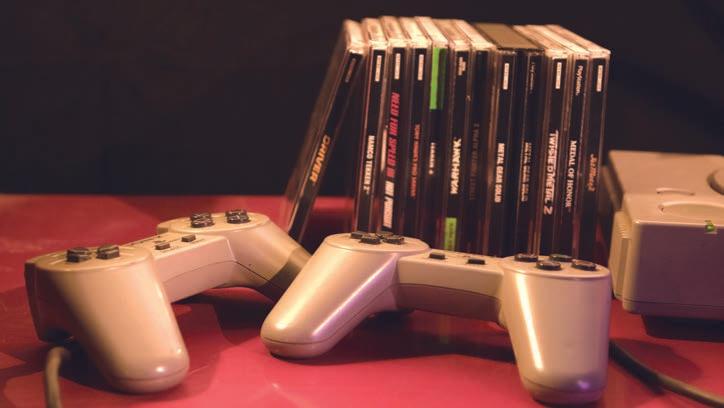
“Nacelle has established itself as one of the premier producers of pop culture programs with proven global appeal.”
—Brian Volk-Weiss
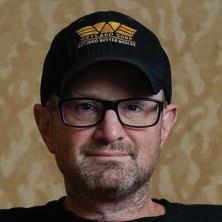
Mighty Monkey (w.t.) / Ryuichi Sakamoto: Last Days / Chasing Perfection: Four Seasons with Japan’s Master Gardeners
At MIPCOM, NHK Enterprises (NEP) is presenting “exclusive and one-of-a-kind stories that only NHK has access to,” says Akiko Nakano, senior manager of content sales. Mighty Monkey (w.t.), produced by NHK and NEP in co-production with NDR, Doclights and ZDF Studios, follows Japanese macaques to see how they are able to thrive in their diverse habitat. Ryuichi Sakamoto: Last Days provides viewers with access to the late Sakamoto’s diaries and more, showing how the maestro grappled with death and lived out his final days. Chasing Perfection: Four Seasons with Japan’s Master Gardeners visits two world-renowned gardens in Japan that “offer breathtaking views for all who visit,” explains Nakano. The cameras follow dedicated gardening professionals as they battle the elements with skill and a disciplined eye for beauty.

Ryuichi Sakamoto: Last Days

“NHK is set to celebrate 100 years of broadcasting in 2025.”
—Akiko
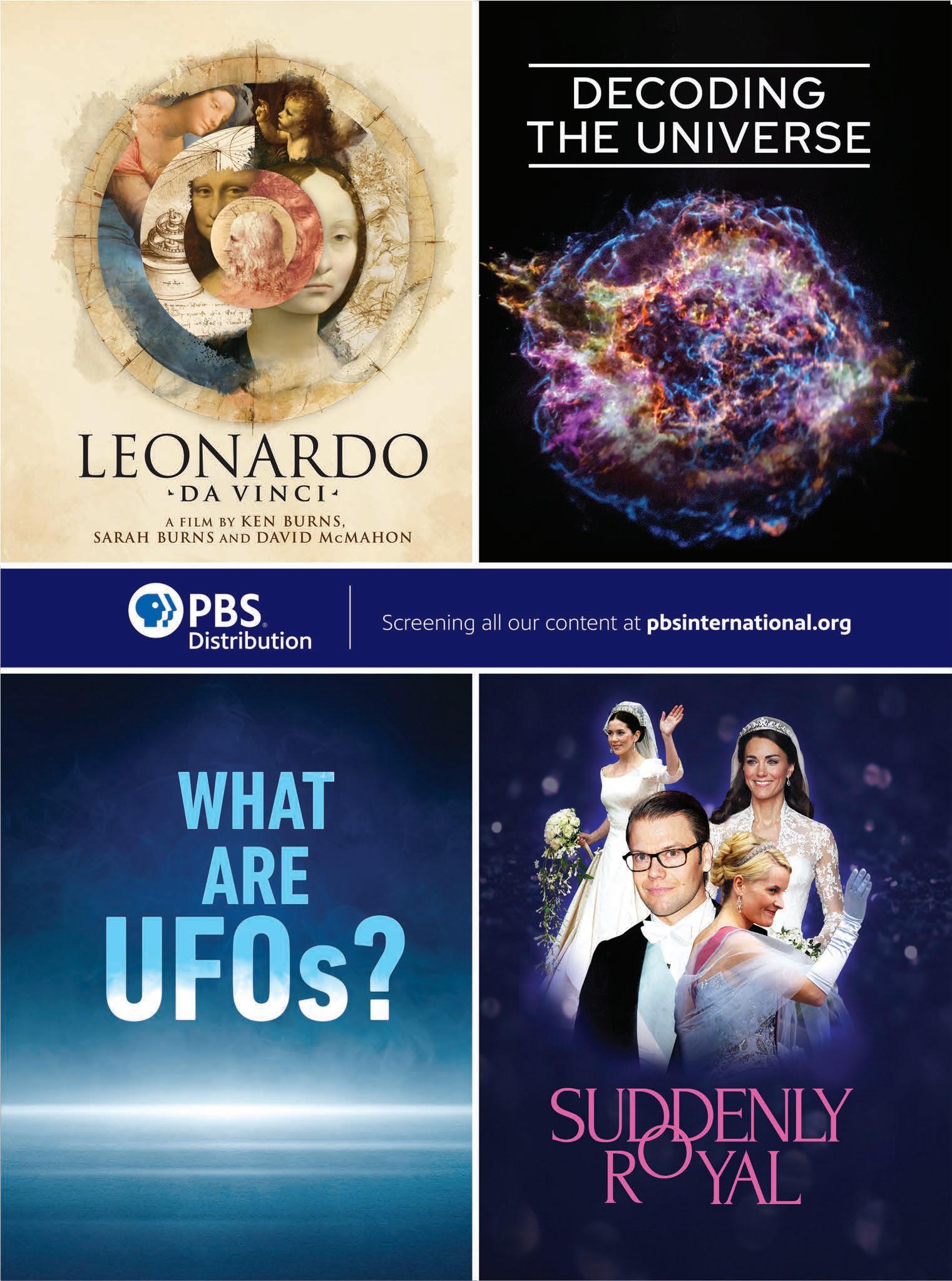
Nöthin’ But a Good Time: The Uncensored Story of ’80s Hair Metal / The Real CSI: Miami / 13 Days in Ferguson
Paramount Global Content Distribution is offering the three-part docuseries Nöthin’ But a Good Time: The Uncensored Story of ’80s Hair Metal , showcasing the notoriously wild 1980s hard rock phenomenon. “ Nöthin’ But a Good Time is perfect for international audiences, as it explores one of music’s most iconic eras with bands that were not just recognizable but hugely popular in many international markets,” says Lauren Marriott, senior VP of content partnerships and brand strategy. The Real CSI: Miami is a true-crime series that seeks out the stories that inspired the hit scripted franchise. The one-off documentary 13 Days in Ferguson explores the riots, protests and aftermath that occurred in Ferguson, Missouri, following a police shooting of a young Black man.
Virgin Island / Monsters of the Deep / Love My Face
The social experiment Virgin Island, part of the Passion Distribution slate, sends 12 individuals with intimacy anxieties to a luxury island retreat where they undergo a bespoke program of transformative therapies to help them overcome their insecurities. “The uniqueness of the tabooshaking premise—focusing on adults experiencing intimacy anxiety—combined with a reality-based therapeutic approach makes this series highly relevant in today’s social environment for everyone struggling to form relationships in the modern world,” says Emmanuelle Namiech, CEO. The documentary series Monsters of the Deep, featuring Steve Backshall, explores the mysterious creatures living in the depths of our oceans. Love My Face is a factual entertainment series focusing on individuals with visible facial differences.
Decoding the Universe / Suddenly Royal / Leonardo
Decoding the Universe , presented by PBS Distribution, explores the groundbreaking discoveries that have transformed our picture of the universe over the past 50 years, shedding light on exoplanets, supermassive black holes and the size of the cosmos. It also follows the teams who are trying to solve two of the biggest mysteries in cosmology today: dark matter and dark energy. Suddenly Royal offers an in-depth exploration of the ordinary men and women from around the world who end up marrying into royalty. Leonardo da Vinci: A Film by Ken Burns, Sarah Burns and David McMahon delves into the life and work of the eponymous 15th-century polymath and traces how the artist has influenced and inspired the generations that came after him. It marks Ken Burns’ first non-American subject.


“Paramount Global Content Distribution is once again coming to MIPCOM with a strong slate of new unscripted titles, ranging from documentaries to reality shows.”

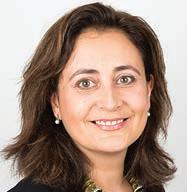
“Passion Distribution is proud to launch a rich and deep slate of exciting new, must-watch shows at MIPCOM.”
—Emmanuelle Namiech

Decoding the Universe
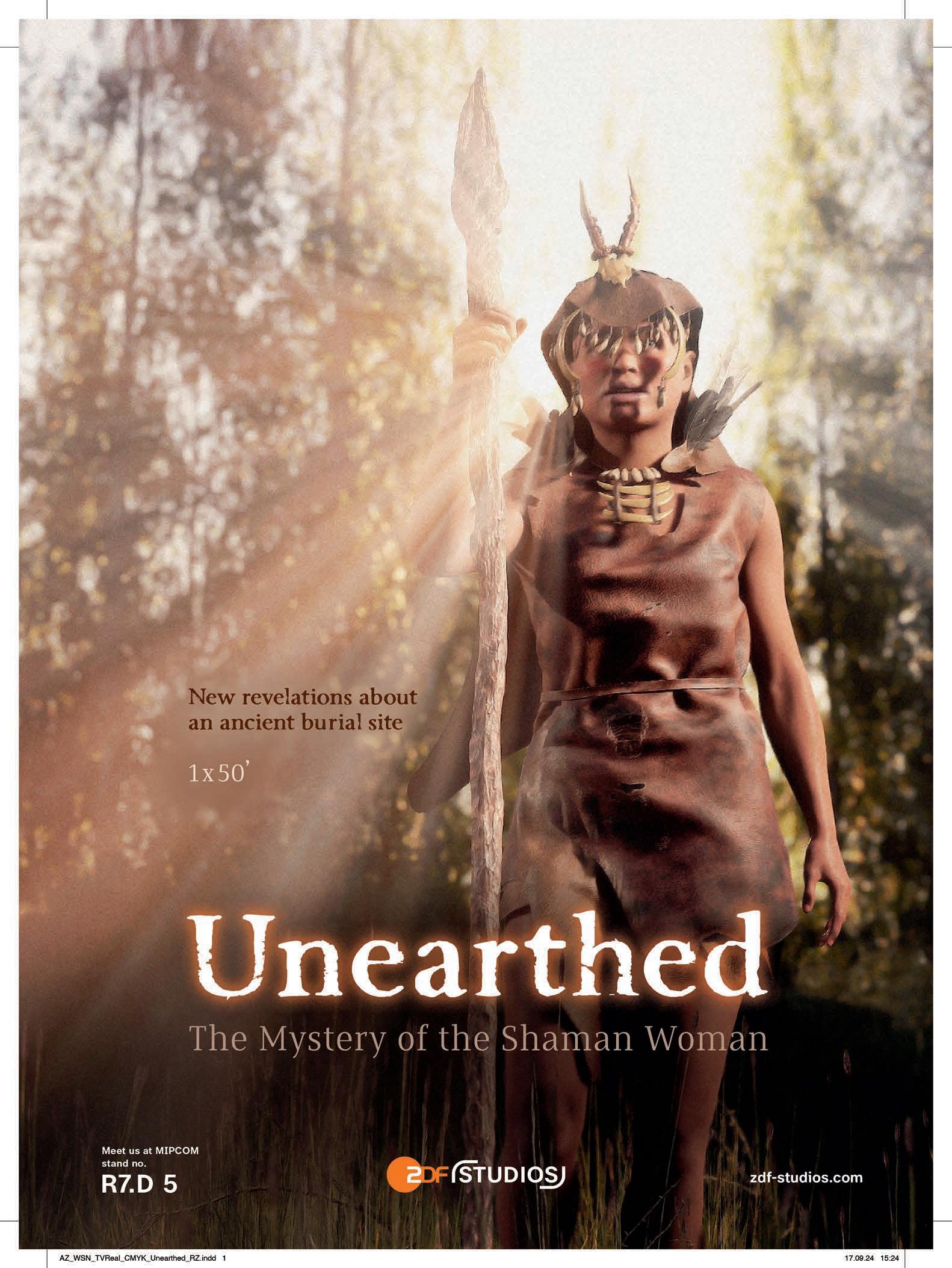
Wild Odyssey / In Their Own Words / The Case Against Cosby
Viewers can follow the flow of water across the Australian continent in Rive Gauche Television’s Wild Odyssey, which promises an epic adventure through unique landscapes, uncovering connections linking all creatures and humans on Earth. Also on offer from the company, the six-part biography series In Their Own Words takes a look into the lives and minds of Elon Musk, Pope Francis, Princess Diana, Angela Merkel, Chuck Berry and Jimmy Carter. In the doc series The Case Against Cosby, a fight for justice is on display, driven by the only survivor whose case could be tried in a court of law, Andrea Constand. The Rive Gauche catalog also features the true-crime shows Very Scary People, Homicide Hunter, Trace of Evil, Homicide’s Elite and Evil Twins, as well as Something’s Killing Me
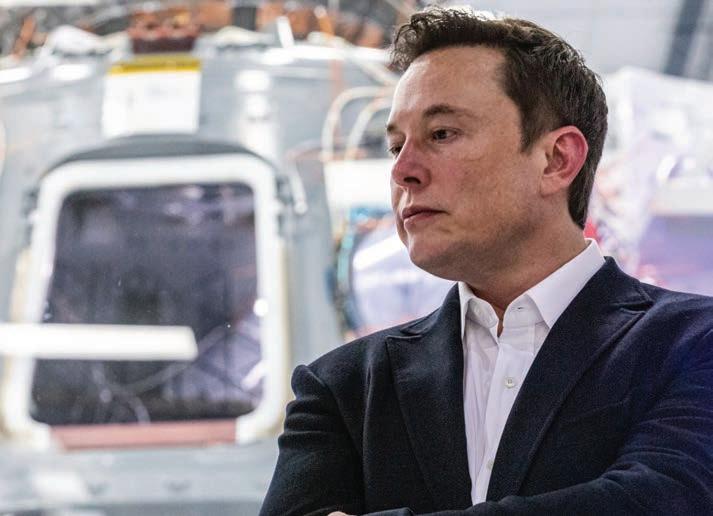
Untold Arctic Wars / The Waves That Changed Us: The Indian Ocean Tsunami 20 Years On / Japan’s Wild Side
TVF International is bringing a second season of Untold Arctic Wars to MIPCOM. The first revealed the Arctic’s role in World War II, and the new season examines the global distribution of power and fight for land in the Arctic region during the Cold War years. “With backing from a consortium of Nordic pubcasters, the series is exactly the sort of high-end, premium factual [that] travels globally, and the story it tells is of truly international importance,” says Sam Joyce, senior acquisitions manager. The Waves That Changed Us: The Indian Ocean Tsunami 20 Years On examines how the 2004 Indian Ocean tsunami, which devastated communities across Asia, has had a lasting impact that still reverberates today. Japan’s Wild Side tells the story of Japan’s wildlife across all four seasons.

Fateful Planet / Unearthed—The Mystery of the Shaman Woman / Welcome to the Forest
ZDF Studios’ Fateful Planet details the history of Earth, from asteroid strikes and volcanic eruptions to global climate crises and periods of mass extinction, and highlights the planet’s recovery after devastating events. Unearthed—The Mystery of the Shaman Woman delves into the mystery of the shaman grave of Bad Dürrenberg, a key finding from one of the last hunter-gatherer groups that was discovered by Nazis. “The film compares the researchers of the Nazi era, who misrepresented and instrumentalized their findings, to today’s researchers, who meticulously compile findings and evidence and use crossdisciplinary methods to examine them,” says Ralf Rückauer, VP Unscripted. Welcome to the Forest centers on foresters and scientists working to increase biodiversity.


“We are incredibly proud of the slate we have assembled this year, which represents bestin-class factual projects.”
—Sam Joyce
“Our catalog includes a wide range of excellent documentaries from talented producers and renowned coproducers.”
—Ralf Rückauer

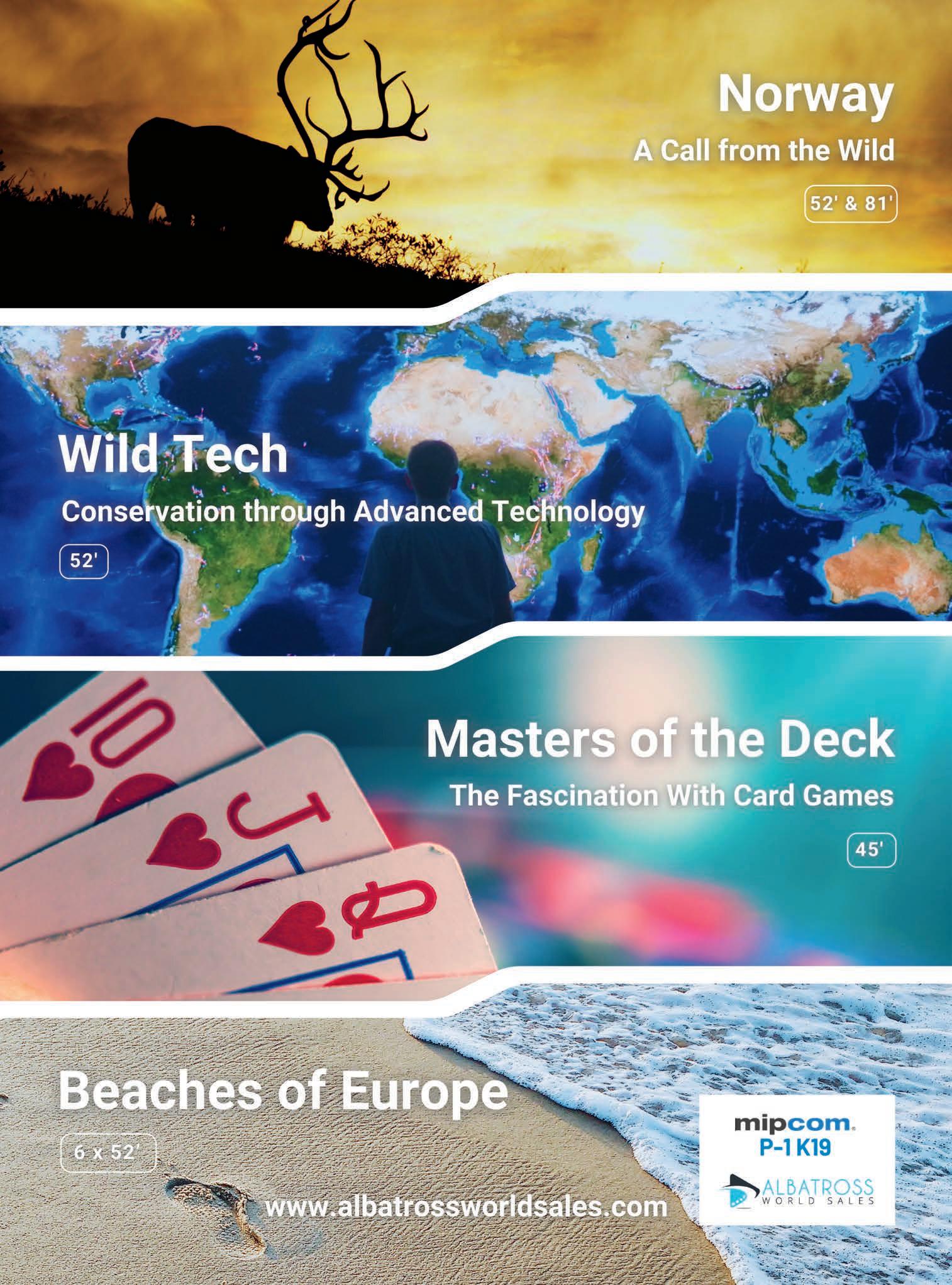

Studios’
The factual world is dealing with the same challenges everyone else is confronting, but the sector is in a better state than most.
Entertainment, reality and docs saw a decline in commissions last year, as all genres did, “but that fall wasn’t as dramatic as the rise we saw in 2022,” Fred Black, principal analyst at Ampere Analysis, told delegates at the TV Real Festival this summer.
Black added, “In 2020 and 2021, scripted commissions outweighed documentary commissions in six of the eight quarters. In the eight quarters since the start of 2022, scripted commissions have only exceeded documentary commissions once. Meanwhile, reality commissions are about level with the number of scripted commissions. As these platforms start to cut back and look for more cost-effective ways to make content, unscripted’s relative importance to the industry is on the rise, even if we’re seeing commission volumes start to stall.”
“There was a lot of doom and gloom last year,” says Paul Heaney, founder and CEO of BossaNova Media, when asked how non-scripted is faring today. “I think we’ve now realized that this is the new world. This is what we have to work in, so we may as well make the best of it; otherwise, our companies and everyone else will no longer exist. We have to jump in and ensure we’re not taking too much risk. Compared to scripted, it’s a much easier genre to reset because of the budgets.”
Nikolas Hülbusch, Director Unscripted at ZDF Studios, concurs with Heaney’s assessment of the market, noting, “The
peaks and amplitudes in factual are much smaller in positive and negative ways than for scripted and other genres. We live in challenging times, but my feeling is still [that it is] a little bit less challenging for us than for our scripted colleagues.”
Anne Olzmann, managing director of Albatross World Sales, adds, “I have seen a real peak since MIPTV. At the beginning of the year, it was still quite slow, and we were wondering how the year would go. It turned out to be a good MIPTV for us. For the programs that are a quicker turnaround, it’s a bit easier than for the heavy, blue-chip wildlife films when it comes to commissions.”
Bo Stehmeier, CEO of Off the Fence, references the post-Covid boom and notes, “I think we’re going through a price correction moment, where people realized we were paying too much for content. Factual is starting to see a renaissance because it’s a fast-moving genre. If you’re a streamer, you can hyper-localize and get emotional stories on the screen faster at a much more manageable price point. Factual distribution will be the centerpiece here.”
Stehmeier believes that the “power of the commissioner is gone. A lot of the purchasing decisions are made by CFOs. The trust in the editorial teams is gone. You see a lot of money now sitting with advertisers, brands, off-air funding. There’s private money coming back into the industry. The people in control of the editorial side of the IP have been silenced. They need to be re-empowered, and I think that’s where factual distribution
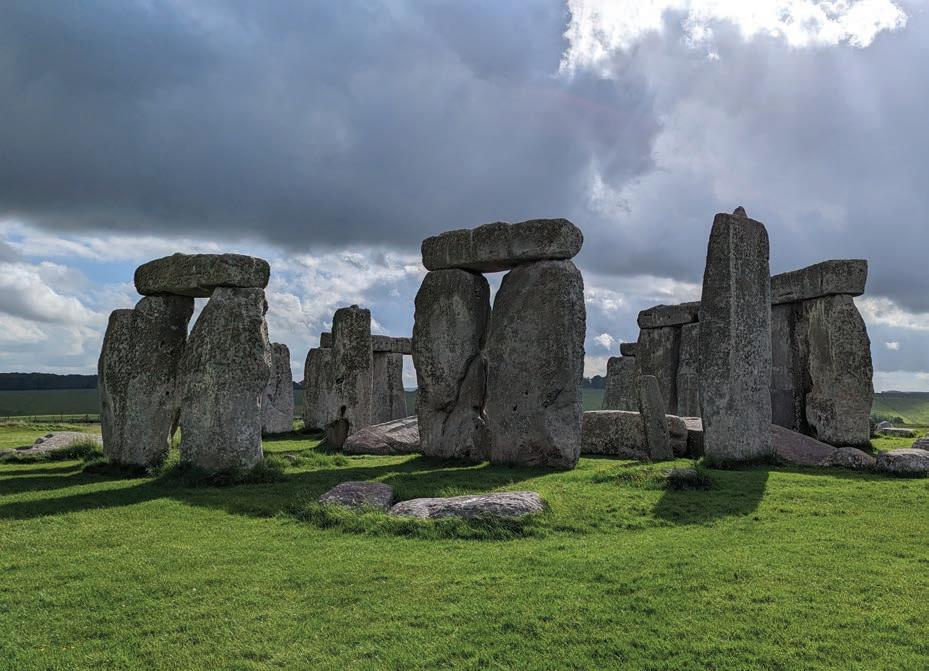
comes back in because we will service them so that they feel more empowered to make purchasing decisions.”
With commissions slowing, a library of scale can significantly impact a company’s fortunes today. Stehmeier notes that “having a solid library is the means of keeping a finger on the pulse with the client because you constantly have something relevant. As you’re there, you can also start positioning advanced acquisitions, presales and co-productions. You can only really be in service to your client if your existing catalog is solid.”
Conversely, having a library of too much content “can slow you down,” BossaNova’s Heaney observes. “I’ve tried the big, solid catalog route in a previous company. It didn’t go well, not necessarily the fault of myself. We have to build—through commissioning, acquisitions or co-productions—a slate. I hate the word ‘catalog,’ but I use it all the time anyway by mistake. You have to acquire content the way the buyers are buying, which is not building up as fast in terms of hours. Distributors, like it or not, are front and center. We do have our fingers on the pulse. If we don’t, we don’t deserve to be in business.”
Stehmeier adds, “If you’re a specialist factual company, hav ing a catalog is relevant. If you’re more lifestyle, factual entertainment, it can be quite heavy because if it doesn’t shift, it rips a hole into your P&L. Having a good solid catalog [is
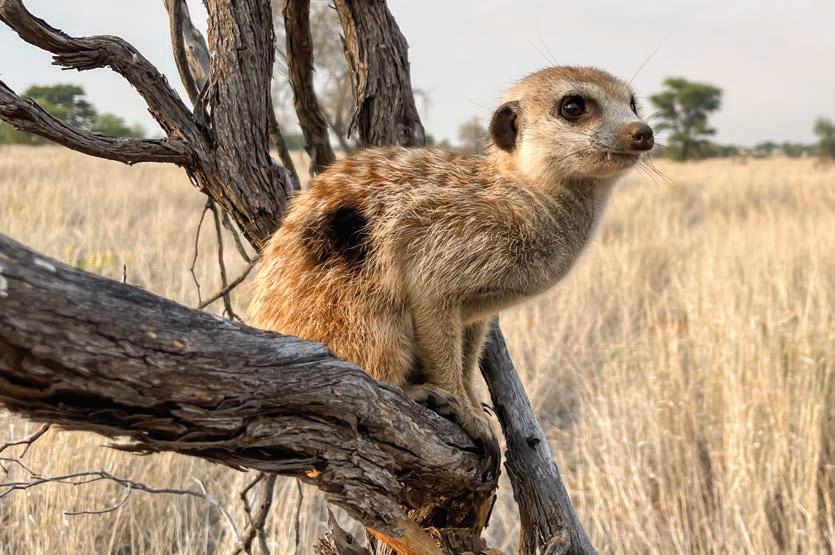
helpful with] AVOD and FAST. The greenest new shoots on prebuys and co-pros are coming out of AVOD and FAST. We wouldn’t be able to get to those co-pros and prebuys if we didn’t have a solid back catalog.”
At ZDF Studios, the library consists of many titles with a long shelf life, Hülbusch explains. “We acquire at a constant rate. Even if the market is challenging, we know that wildlife and history programs we co-produce, commission and acquire will still be attractive in a year or two when the market might be in a better position again.”
The distributors surveyed for this piece think boarding projects early amid a competitive landscape is crucial.
“You have to think of the earliest stage you can get involved in and then go a little bit earlier than that,” Heaney quips. “That’s been happening for quite some time. Producers’ livelihoods are at stake. You have to listen to what the buyers tell you. That’s gold for the producers. Sometimes, they develop in a vacuum. And it’s not always their fault. Our job is to help those we think can deliver on brief, on budget, on schedule.”
“We still have all kinds of business models,” Hülbusch adds. “There are still some programs where we can afford to come on board at quite a late stage. But there is a rising number of programs which, without our input, simply would not have come about.”
Off the Fence is also seeing new opportunities for reversioning older content. “There is a lot of amazing content out there that just didn’t get seen,” Stehmeier says. “With a bit of a polish and sometimes an editorial shift, we can make it more mainstream. So, it’s not just [about coming on board] early, especially when you’re looking at feeding your FAST and AVOD business. There is still a lot of valuable content that’s not being looked at.”
Stehmeier also highlights the role distributors play in structuring shows’ financing. He notes: “Ultimately, the people who are underwriting the journey are either a distributor themselves or a fund or somebody else, and they need the skill set of a distributor in the middle to calculate the ROI and the time, how this money is going to work and who’s going to cash flow it. The distributors are becoming the financiers of many of these shows.”
“I couldn’t have gotten BossaNova off the ground without Night Train Media’s support,” Heaney says. “They brought in a fund. Ten years ago, getting content, [you] didn’t need to use as much risk in terms of investment. Probably 10 or 15 percent of the content you want out there to sell may not need a deficit; ten years ago, it would have been the opposite.”
ZDF Studios does engage in deficit financing on certain productions “at a reasonable level,” Hülbusch says. “Sometimes we come on board as a development partner and then go to the market with the producer and look for international partners. That’s very time-consuming, and you need a lot of capacity to do that. Therefore, this still is and probably will stay the exception. We can afford to do this maybe once or twice a year.”
ZDF Studios still largely uses the traditional financing rubric, consisting of a commissioner’s fee, the producers’ own investment, a distribution advance and public funding.


Heaney adds, “My first question is, What’s the budget? And then you almost have to work backward and see where you will get to. It’s always that jigsaw puzzle. Is there a commissioner involved? What do our sales projections look like? Is there an advance we can stick in? The Development Days we do fast-track that.”
“It’s also a question of who your audience is,” Albatross World Sales’ Olzmann adds. “A lot of producers want to be on public channels. They need the big audience. That’s restricting for alternative financing.”
Stehmeier sees a wealth of potential in the world of alternative funding sources, “but that comes more from our production side. There’s a lot of need for audiovisual storytelling. It could be from brands, hotel chains or tourism boards. As a company, we attend almost as many TV festivals as non-TV festivals. So, from a production point of view, there is a lot of work out there. The distribution business then comes in and looks at the ROI. Within that conversation, we cancel out free-to-air sales because it’s too branded or too alternative. But there is a lot more money out there than one thinks. And they all want to be on television. That’s why it’s so important to have your finger in the FAST business because if you do have access to a channel, even if it’s not your own but you’re the service entity of the channel, eventually you will be able to bring those opportunities back to the FAST ecosystem.”
AVOD and FAST present numerous opportunities for distributors across the U.S. and Europe.
“In the last three years, AVOD was 5 percent of our annual turnover, and it’s gone up to 35 percent,” Stehmeier says. “It’s becoming a real revenue driver. It’s a bit like what we used to do when we windowed between pay and free-to-air. Carving out FAST rights is becoming much more of a thing. We’ve got a lot of hopes for that part of the market.”
“Factual is an obvious place to start when rolling out FAST channels,” says Mike Gould, senior VP of digital at Cineflix Rights. “It has some very established subgenres that users are familiar with. The bulk of our catalog is high-volume unscripted programming, so it made sense for us to focus on those key brands and launch FAST channels with those shows as tentpole IP.”
Patrick Hörl, founder and managing director of Autentic, agrees that having a deep library is crucial. “You need to be able to focus within your genre on an IP that people like. Data about how your content performs in the broad spectrum of the AVOD world helps you make the right decision on which theme your FAST channel should focus on. It also helps you to convince the platforms why they should take your IP rather than somebody else’s. We are still trying to figure out what role brands play in the FAST world, but it’s very clear that brands help you and that established brands give you a head start against everybody else in the market. The difficult thing for us is placing the exploitation of our piece of content on FAST amid all the other monetization streams we want to utilize. That needs a lot of fine-tuning in the real world.”
Building franchises has been vital for Heaney since he launched BossaNova.
“Ongoing series are the ones that you would hope the AVOD and the FAST channels want,” he says. “FAST is more single-IP driven these days. I’m taking gambles on franchises I’m starting and hoping to get beyond three series. Once you get 30, 40 or 50 episodes of something, we can think this will start throwing off income eventually. We’re polarized with content at the moment. It is franchises on one side and noisy, one- to fourparters on the other, in whatever genre you want. With FAST, it might be getting a bit easier with some bigger networks. They appreciate that this is the new world and that they will have to give us some flexibility. Often, the linear channels aren’t offering as much, or they’re offering the same, and if costs have risen, it’s less money, effectively. Therefore, they are becoming easier to work with regarding the FAST and AVOD rights, especially FAST rights.”
Albatross has not put itself in the business of building FAST channels, Olzmann says, but has been licensing to AVOD and FAST operators. “It’s lucrative to find a balance of the missing license fees from the broadcasters.”
For FAST to see real monetization gains, advertising needs to be much more targeted, Autentic’s Hörl explains. “Once the international platforms get their acts together better when it comes to selling ads, it will help all of us. We want this to be a thriving market, not just because we want to make money from our content but also because, ultimately, we want the market to be healthy enough to induce the production of new content. That’s what it’s always about. You don’t want to deal with a medium that represents a bottom feeder in the market. You want to deal with a medium that helps you create that great content that we are all so excited about.”
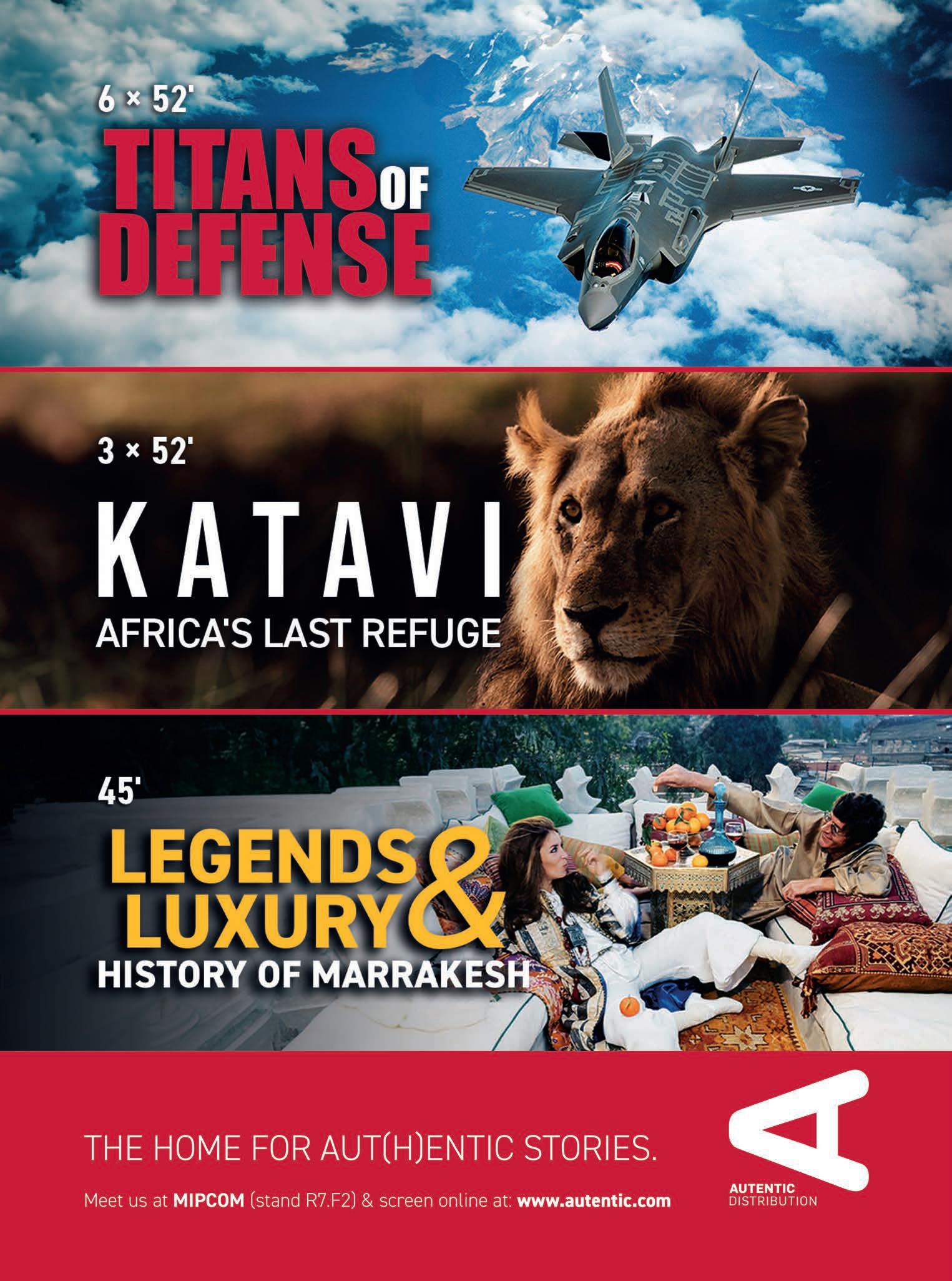


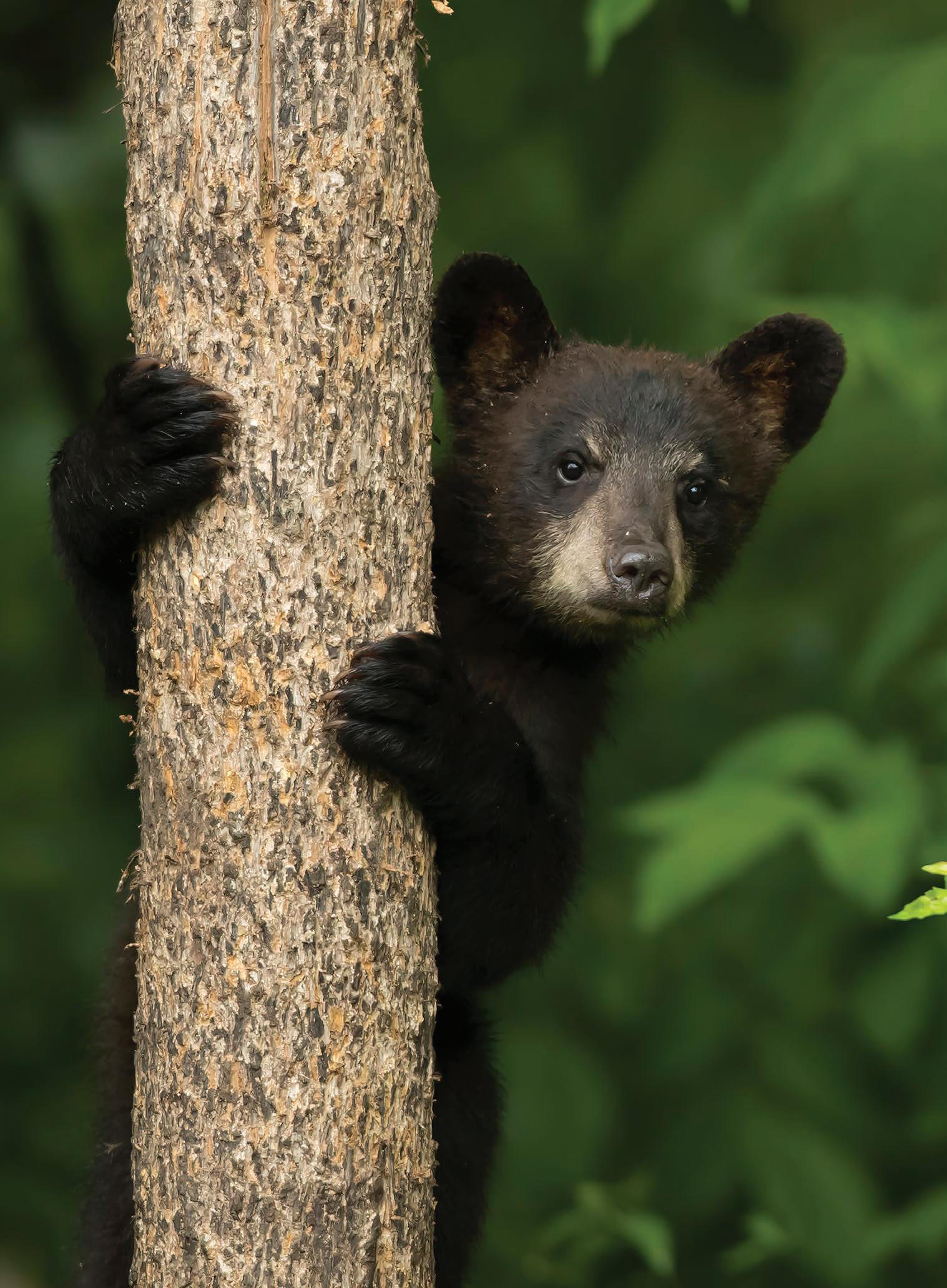
the
By Mansha Daswani
Arriving in 2025, The Americas marks NBC’s biggest-ever bet on premium factual. The ten-part blue-chip production, hailing from the acclaimed team at BBC Studios Natural History Unit (NHU) in association with Uni versal Television Alternative Studio, is narrated by Tom Hanks and features a score from Oscar winner Hans Zimmer.
“This is, as far as I understand, the most expensive unscripted project in NBCUniversal’s history,” Toby Gorman, president of Universal Television Alternative Studio, told MIPDoc delegates at a session about the show earlier this year. “It’s a big swing for us. We’re confident it’s been worth it.”
While somewhat crowded out by the true-crime trend that’s dominated factual for the last year, wildlife continues to be in strong demand by broadcasters, streamers and, most importantly, audiences.
“Nature and wildlife feels very strong at the moment,” says Berend Dreier, director of co-productions and sales at production house Terra Mater Studios. “There is a strong trend for escapism. People just don’t want to be bothered by the many problems that we face while still wanting to know about them, be educated and make a difference, especially
when it comes to environmental issues, conservation issues and so on.”
Technological developments have been vital in driving the genre forward over the last few years.
“I’m convinced that storytelling and craftsmanship are crucial to the nature film genre,” says Armin Luttenberger, head of content sales international at ORF-Enterprise, which represents the storied UNIVERSUM brand. “Technological progress has certainly led to increased efficiency on one hand. You don’t need a helicopter; you can use a drone. It also enabled new perspectives on wildlife. On the other hand, it doesn’t always get cheaper because it’s resulting in higher standards. Also, it increased costs, and [with] well-made blue-chip documentaries, the factors of time and human resources, going through the entire material, being on location, should not be underestimated. Despite all the technological progress, the success of wildlife documentaries rises and falls with creative execution and substance.”
“Cameras are being produced in 4K and now 8K resolution and even higher and getting even smaller to capture the natural world in all its beauty and glory,” Dreier adds. “With drones, for example, you can now achieve shots for a more reasonable price than when you needed helicopters. Remote cameras and camera traps also help to get the viewer into the scene and experience elusive animals and scenes like never before. The downside of that is that you get a lot of footage. I hope AI will

Terra Mater Studios specializes in high-end natural history docs like the brand-new American Amazon.
help tremendously with the archiving and tagging and making this content more available for future exploitation.”
Ambition, of course, does not come cheap, and early involvement by distributors is crucial.
“We’re particularly involved in almost all of the projects of our flagship program, ORF UNIVERSUM, from the very beginning or a very early stage,” Luttenberger notes. “Our entire team values the highly professional collaboration with the colleagues in the editorial department and all the independent producers that we’re working with simply because the brand and the programs coming out of that slate are pillars of our portfolio. We support it directly through financial contributions and by offering and seeking new co-production partners from around the globe. Coproduction is necessary because well-made nature and wildlife programming is expensive.”
Financing is taking longer today, Dreier adds. “You also have to be more creative and collaborative to get productions off the ground. We like to come in from the beginning. We want to make it a Terra Mater production or co-production from the beginning and try to steer it in a direction where everybody is super happy with the outcome, even if it sometimes means different versions to take in all the partners’ needs, which then, of course, adds a little bit to the cost.”
Joe Barrett, VP of global sales at PBS Distribution, points to the importance of co-pros at the U.S. pubcaster. “It’s important to have that gap funding piece in place and assist in the copro duction funding to get the film across the line. It benefits everybody. And when all the partners are involved right from the beginning, everyone has skin in the game.”
Barrett points out that for nature and wildlife documentaries to resonate globally, audiences must have an emotional connection to the subject matter.
Luttenberger adds, “It’s crucial to make the audience realize that we are sharing our home on this only planet we have. Being as clear as possible on this message will also help connect audiences to our nature and wildlife stories because a place might be far away from my home, but actually, it’s on the same ball in the universe.”
Dreier says it also helps to have a theme that resonates globally, like sustainability. “But also, the classical topics of a
natural history documentary, whether it’s an animal family fighting for survival or a predator and prey.”
Delivering something viewers haven’t seen before is also paramount, Barrett says. “Having that revelation is important.”
NHK Enterprises, for example, arrives at MIPCOM with Mighty Monkey (w.t.), coproduced with NDR, Doclights and ZDF Stu dios. “Shot in beautiful 4K UHD, the cameras travel through Japan to capture unique monkey groups displaying different localized food habits, including world-first footage of monkeys catching live fish as well as how such new behaviors spread among individuals in the pack,” says Akiko Nakano, senior manager of content sales.
Delivering that compelling access should, hopefully, help commissioners get over the line amid this risk-averse climate. On that front, Dreier is looking forward to new forms of creative and commercial collaboration to get shows made. “Financing is getting more and more difficult. We need to be more creative in how we work together and in the rights we share to get the productions out there.”
“We can all be a little braver when presenting more challenging products,” Luttenberger adds.
“Being challenged and confronted is important,” Barrett says. “Rather than [just] being confronted with an issue, I would like to see elements of, What’s a solution? Not just doom and gloom. What would offer hope to the audience?”
While addressing contemporary ecological issues and delivering solutions is key for new wildlife fare, library titles are finding renewed life on FAST and AVOD services.
FAST has been an exciting development for Terra Mater Studios, Dreier says, referencing the company’s partnership with Autentic for the Terra Mater WILD channel in Germanspeaking countries. “The data we get there, from viewer retention to ad sales, inventory sales and so on, is great. The natural history audience feels built-in with FAST channels, especially in our home turf territory. It’s also good that we have this huge back catalog. And all our content is at least HD; most is 4K already. It caters to that audience who just wants to have that lean-back experience and watch beautiful nature on their devices. It’s also a beneficial extension of the life cycle of natural history content.”
Terra Mater has also found success on YouTube. “We have [more than] 450,000 subscribers now, so it’s growing steadily,” Dreier says. “Producing content for that audience works well. We published a video about the largest beaver dam on Earth, which has more than 3 million views. We want to try it to see how the long-form, 50-minute documentaries or even longer work there and understand the algorithm better.”
Barrett adds, “FAST has allowed a much broader audience to view nature documentaries because they’re largely censor-friendly. Typically, they’re family-friendly. So, you broaden your audience. Many FAST channels are becoming pickier, but they do need content. It’s been a wonderful platform for nature to be rereleased.”
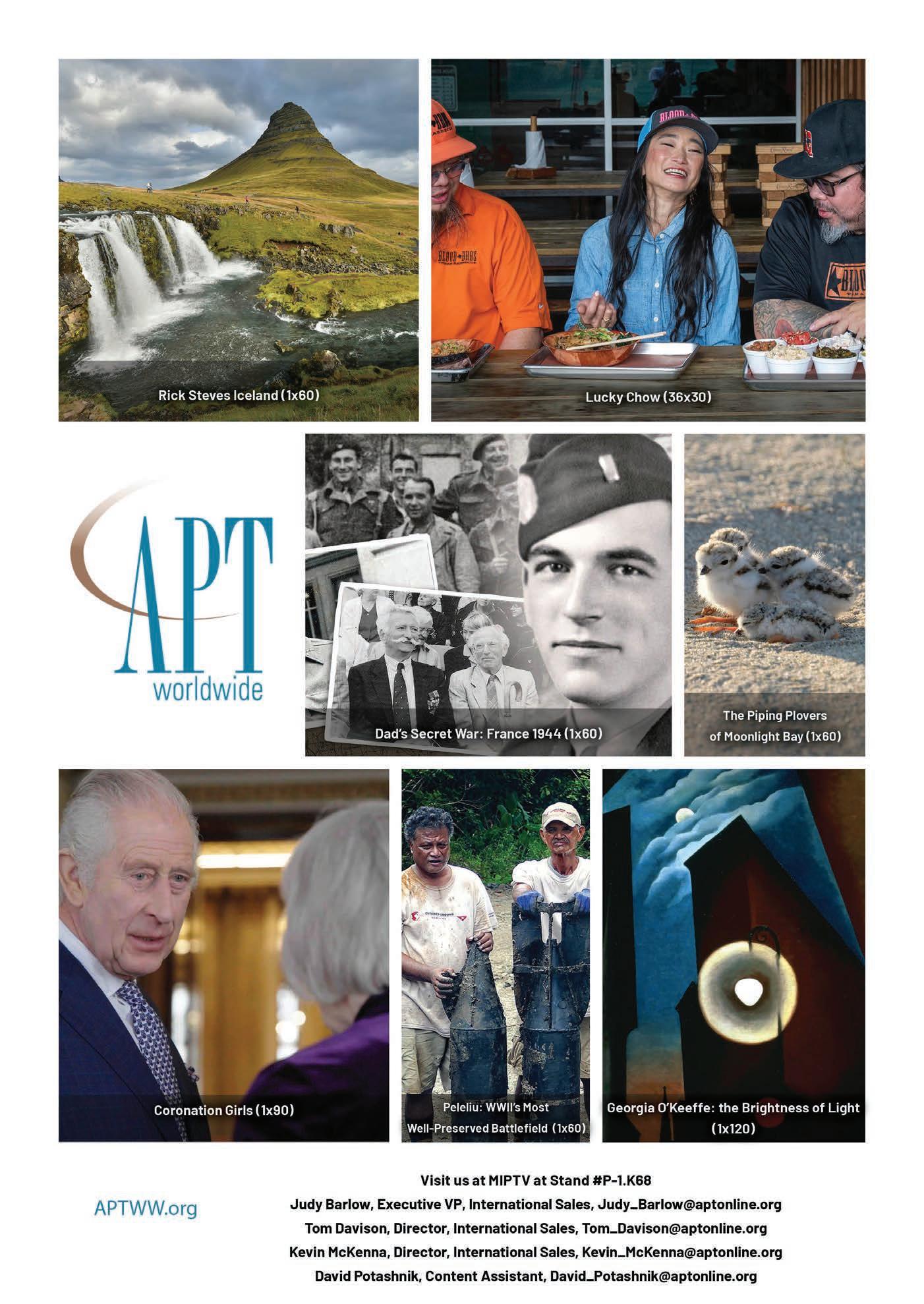
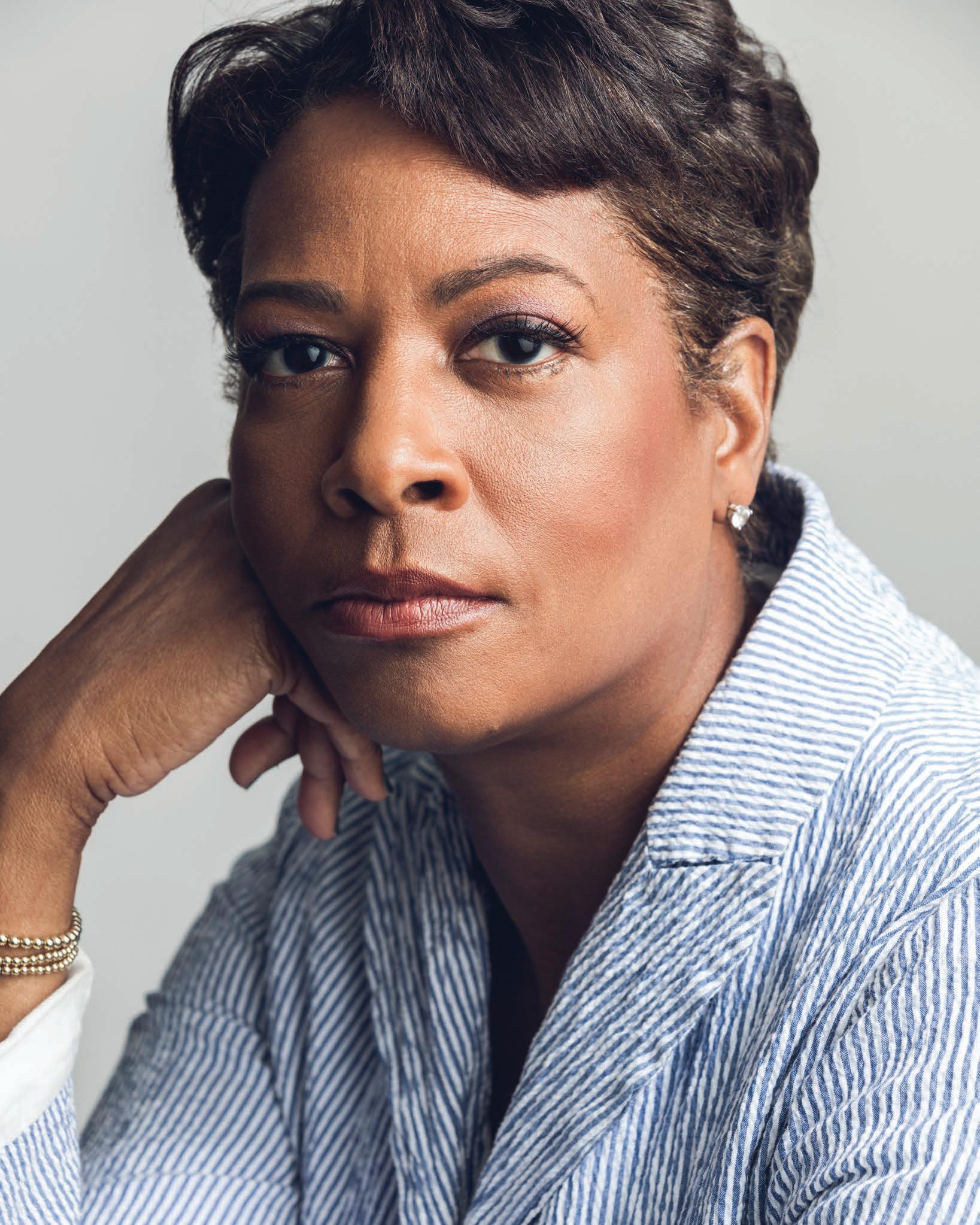
Documentary filmmaker Dawn Porter has a vast body of work, with films and series that shine a light on important figures in history, such as The Lady Bird Diaries and John Lewis: Good Trouble ; and impactful societal topics, including Deadlocked: How America Shaped the Supreme Court. She has a new project coming up about Nelson and Winnie Mandela, based on Jonny Steinberg’s book Winnie and Nelson: Portrait of a Marriage. Porter, founder of Trilogy Films, tells TV Real about navigating the documentary landscape. By Kristin Brzoznowski
TV REAL: How long does the process typically take to get a documentary made, from the seed of an idea until coming to the screen?
PORTER: Every project is different. A lot depends on if you have all your funding in place. Some are meant to be a longitudinal look. My first film, Gideon’s Army, took four years. The first year was trying to find some money, pitching people and introducing myself to everybody who would listen. It took four years but three years of actual production and editing. Same with Trapped, which is a film about abortion providers working in the Deep South. We were following as all these different laws started to become enacted and the implications of them. For that, you want to take a longitudinal look. You want to see the law and then how it is affecting people. The Lady Bird Diaries was relatively fast; it was about a year. Luther: Never Too Much was about a year. Those are mostly archival. Once you’re established on your themes and what story you’re trying to tell, those can go quicker. There are some interviews in Luther , but you don’t have to schedule a ton of people, so those go quicker. [The documentary on Nelson and Winnie Mandela] will be about two years because there’s a huge volume of material, and we are interviewing a lot of people to get different perspectives. There’s a lot of nuance to the story, and not being South African, I really want to make sure I’m speaking to South African people to get it right. Fast is a year. Two years is nice. Three years is average. Some people take ten years to make a film—that’s mercifully not me.
TV REAL: You mentioned that a big piece of that puzzle is funding. How are you finding the money in the market to make your projects?
PORTER: I’ve had a number of projects come to me from networks. Usually, when they come to you, they have the financing. Those are great; it may take several months of development, but once you’re set, the network will pay the full freight. Then there’s some private investment. [The
Mandela doc] is funded by the Schultz Family Foundation. They are interested in stories about leadership and about what politics are actually comprised of. But we’ll need more private money and then hopefully a presale for that. It’s usually a combination of some private money and then a network or a streaming service. There are also foundations, which are incredibly important to our work. The foundations are besieged with worthy projects. I don’t envy them for the job of figuring out what to fund. I’ve been funded by the Ford Foundation, the Mellon Foun dation and the MacArthur Foundation. I’m really fortunate that those actors are in our marketplace. We have an ecosystem that takes a village, and we definitely need more people and more entities in it.
TV REAL: What’s your view of the nonfiction programming landscape, and what are buyers, commissioners, foundations and private funders willing to invest in?
PORTER: There’s a disconnect between what the private funders are interested in and what the buyer/distributor entities are interested in. I’m seeing smaller budgets, longer time to “yes” and less money for socially conscious and social justice projects and more of a need for celebrity. True crime has always been its own popular genre. It’s harder to make films that are about art or politics that are not sensational. It’s always been hard. We’ve got to be more creative. We’ve got to be really good partners. We’ve got to watch those budgets. A lot of folks are reaching out to brands, which is an interesting development. Not every film is right for brand support, but there are some. As filmmakers and producers, we have to do what we’ve always done, which is roll up our sleeves, get creative, be clear about the story we’re telling and the quality that we’re making. We also need to diversify. We’re looking at doing museum projects or projects that are more commercial, so we’re not just dependent on the commission of the broadcaster or streamer.
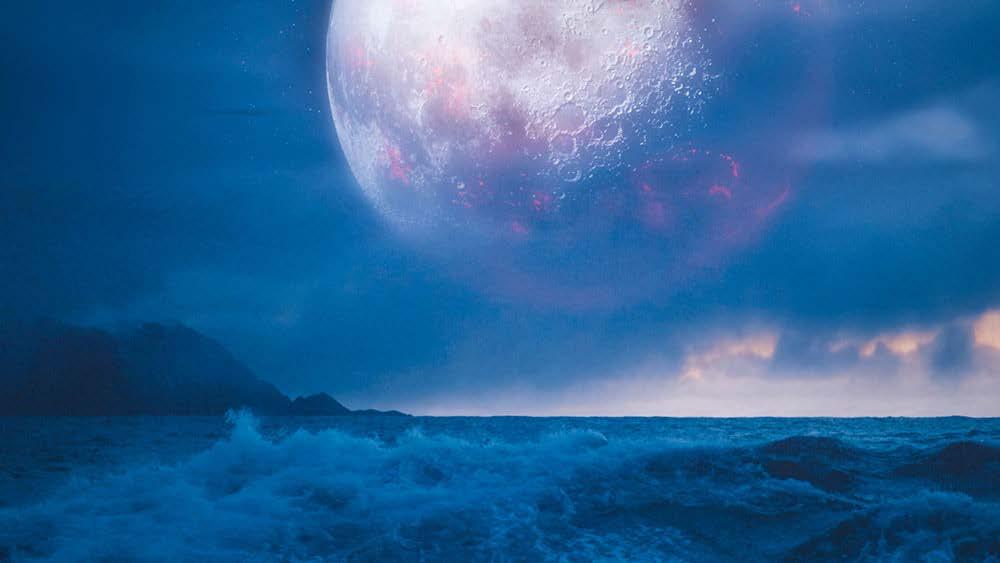
Whether you’re searching for compelling history, stunning wildlife, buzzy reality or gripping true crime, you’ll find a standout selection in our latest edition of the TV Real Screenings Festival.
ZDF Studios arrives at MIPCOM with highlights across its key strengths of histo ry, wildlife and science. Produced by south&browse for ZDF in association with ARTE and ZDF Studios, Unearthed–The Mystery of the Shaman Woman explores a key European archaeological discovery: the shaman woman of Bad Dürrenberg. “From a time when there were no written records, this site was first researched by the Nazis, who saw a physically strong male warrior from an ‘original Aryan race’ in the buried person,” says Ralf Rückauer, VP Unscripted. “It was, in fact, the most powerful woman of her time.” ZDF Studios is also unveiling the three-part Welcome to the Forest , which offers a unique

perspective on battling climate change. Rückauer also highlights the five-part Fateful Planet, which “chronicles the history of our planet from its dramatic birth, through the cosmic and terrestrial forces that have shaped it.” Rückauer bills Time: A Journey Through Thousands of Years as a “groundbreaking twopart documentary focusing on the universal concept of time.”
All3Media International is catering to the surging demand for true-crime fare with a selection of titles, among them the volume offering FBI True from Bright North Studios. “Revealing exclusive insight into stories of FBI agents and their most infamous cases, this is a brand-new highprofile and high-volume true-crime offering,” says Caroline Stephenson, senior VP for sales in the U.K. and Eire. The company is also showcasing The Body Next Door, “a globe-spanning story intertwining a gripping and tragic mur der mystery with a dramatic family saga.” Another highlight is Confessions of a Teenage Fraudster, about con artist Elliot Castro.
MH17: The Plane Crash That Shook the World, commissioned by Channel 4, takes an in-depth look at the Malaysia Airlines flight shot down by Russian-
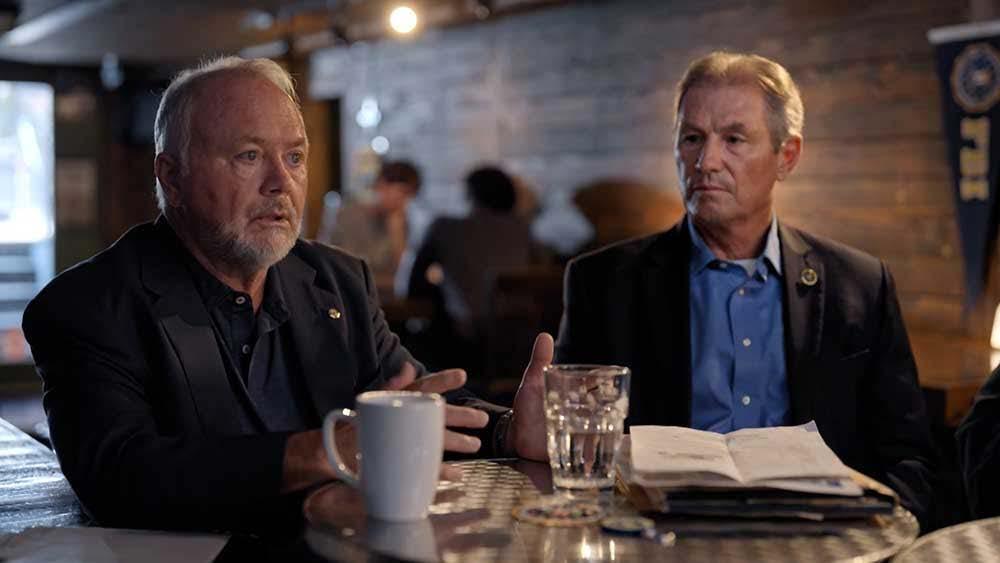


backed forces a decade ago. “It examines the disaster and its legacy, uncovering a story that takes us right up to the present day,” says Tatiana Grinkevich, head of sales at BossaNova Media, which is launching the documentary at MIPCOM. Also in the history space, the company is showcasing Greatest Escapes of World War 2. Meanwhile, Professor Alice Roberts explores Greek history via rail through Greece and Turkey in Ancient Greece by Train. “Having explored Ancient Egypt and the Ottoman Empire by train, Professor Alice Roberts continues her journey as she learns about the Ancient Greek civilization that has had such a powerful effect on our lives today,” Grinkevich says.
Speaking to the broad variety of the All3Media International non-scripted slate, the company is also showcasing the fourth season of Race Across the World, which “combines a game show, a travel show and a reality show all in one,” says Peta Sykes, VP for the Nordics. In the dating/relationships space, the company is touting Bad Boyfriends. “Olivia Attwood’s tough love approach makes this series incredibly addictive and entertaining.” Also on offer is the 90-minute doc Guy Martin: Top Gun.

ZDF Studios’ Time: A Journey Through Thousands of Years

New natural history titles rolling out at MIPCOM include the feature Norway—A Call from the Wild from filmmaker Asgeir Helgestad ( Queen Without Land ) and on offer from Albatross World Sales.
“ Nor way—A Call from the Wild , already an award winner, offers breathtaking cinematography and a personal narrative that highlights the universal theme of nature’s vulnerability,” says Anne Olzmann, the company’s managing director.
NHK Enterprises also has a new blue-chip wildlife production on offer: Mighty Monkey (w.t.). “Shot in beautiful 4K UHD, the cameras travel through Japan to capture unique monkey groups displaying different localized food habits, including world-first footage of monkeys catching live fish, as well as how such new behaviors spread among individuals in the pack,” says Akiko Nakano, senior manager of content sales. The commercial arm of the Japanese pubcaster also heads to Cannes with Hayao Miyazaki and the Heron , chronicling the famed animator’s journey to make The Boy and the Heron .
Albatross World Sales’ Norway—A Call from the Wild
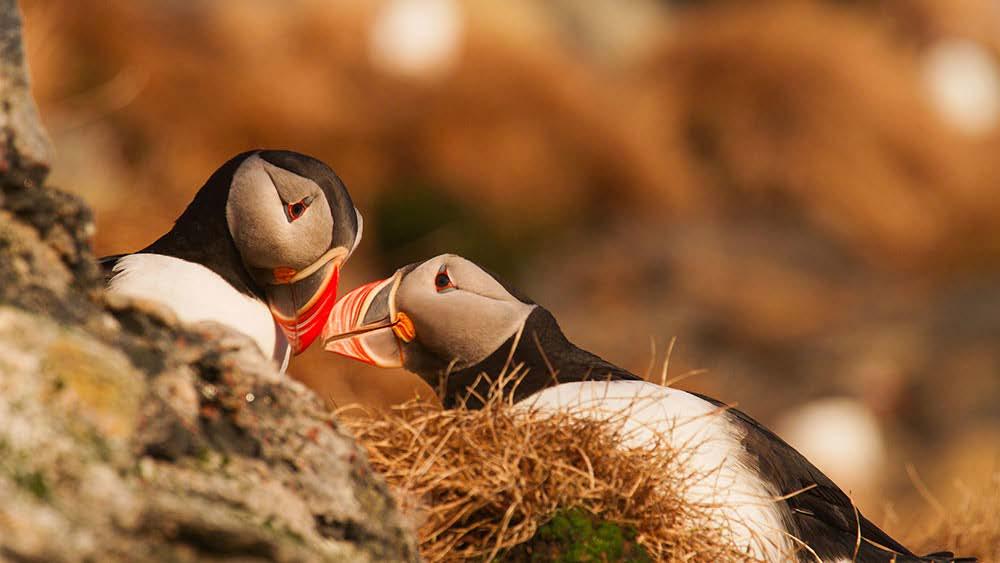
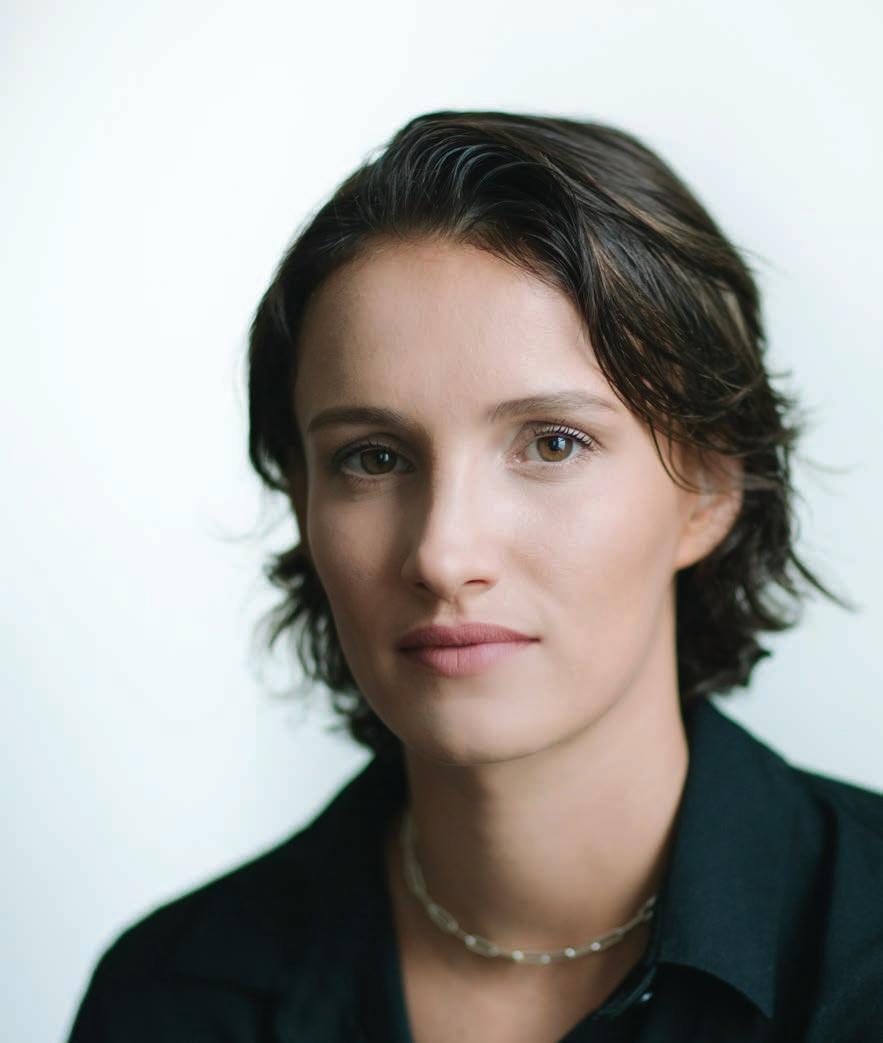
By Kristin Brzoznowski
The buzzy new series The Secret Lives of Mormon Wives has translated social media success to the TV screen. Executive producer Danielle Pistotnik, a talent manager at Select Management Group, began managing stars Mayci Neeley, Taylor Frankie Paul, Whitney Leavitt and Mikayla Matthews in 2020 when they were first starting to pop as TikTok influencers. Pistotnik, along with colleagues Lisa Filipelli (a partner at the company) and Georgia Berger, who are also executive producers on the series, saw perfect potential to bring their stories to reality TV. The show’s debut broke streaming records on Hulu, becoming its most-watched unscripted season premiere this year so far. Pistotnik talks to TV Real about what makes for compelling reality television.
TV REAL: How did The Secret Lives of Mormon Wives come together?
PISTOTNIK: I saw these girls online four years ago. I’m incredibly passionate about women who can be moms, stay at home, take care of the family and be entrepreneurial and financially support their family. Since the beginning of my career, that’s been something I’ve always wanted to support. So, when I saw them, I reached out, and we became besties right away. I love these girls. It
didn’t take long after getting to know them on a deeper level that [I knew] there was something much bigger here and a story that had to be told. I went straight to Lisa [Fil ipelli] and said, “You have to meet these girls. They are amazing. They are reality stars.” And we began the pitching process. We found perfect partners with [executive producers] Jeff Jenkins and Russell Jay-Staglik—and the rest is history.
TV REAL: What was it about these women that you felt could be compelling for reality television?
PISTOTNIK: They’re unbelievably entertaining. I open my phone every single day and these same people make me laugh so hard that I start crying during work hours. They’re smart and inspiring. They have such a deep story that goes vastly beyond what you’re able to show in 30-second clips online. I felt like it was important for the world to see.
TV REAL: Tell us about the marketing machine of having these women involved who are already quite adept at social media.
PISTOTNIK: These girls are geniuses. There is so little input that we have to give them when it comes to social strategy and getting attention. They think of things that I could not come close to conspiring in a million years. And they do it while still being friends, working together, engaging the audience and creating these massive conversations online that snowball to people even outside of their direct following. They took it and ran with it, and they did an amazing job.
TV REAL: What do you hope audiences see in this series, especially viewers who may not be so familiar with Mormonism?
PISTOTNIK: A big thing that I learned from the relationship I have with these girls is that we are all so much more similar than different—no matter what walk of life you’re from. I am a gay Jewish woman from Los Angeles, and these Mormon women are some of my best friends. Their families have invited me on vacation. My friends at home will ask, What’s it like hanging out with them? And I’m like, Honest ly, they’re kind of cooler than you! I sometimes like hanging out with them better than my friends of 15 years.
[Laughs] That’s what I want people to see. The portrayal in media of Mormonism is incredibly inaccurate; it’s extreme and not fully fair as a representation of millions of people. These people are just like us. It’s not this crazy cultish, Amish-dressing, over-the-top culture. They’re just cool people who have a really awesome sense of community. Maybe it’s different from how I was brought up or how my children will be, but it’s hard not to respect and understand where they come from.
TV REAL: In terms of spotting talent, what elements make for a reality TV star?
PISTOTNIK: A lot of what creates a star is not just the individual; it’s the dynamic between them and the rest of the cast. Watching how these girls interact is so interesting because it’s not just about the business relationship that they have; it’s the relationship that they have with each other’s families. They are trying to bridge this gap between business and interpersonal while navigating their faith and the judgment coming from the rest of the world that they’re being bombarded with. The way they handle it as a group is so fascinating to watch. They handle it with such elegance.

